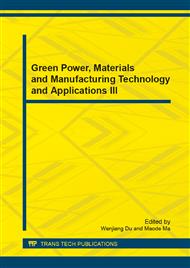[1]
Guidoni, G, Vazquez, M (2004). An evaluation of rust conversion coatings in simulated reinforced concrete pore solutions, Anti-Corrosion Methods and Materials. Vol. 51, No. 1, pp.18-24.
DOI: 10.1108/00035590410512690
Google Scholar
[2]
Yamashita M, Nageno H, Misawa T, et al. Structures of protective rust layers on weathering steels by long-term exposure in the industrial atmospheres of Japan and north America. ISU INTERNATIOANL. 1998. 38(3): 285.
DOI: 10.2355/isijinternational.38.285
Google Scholar
[3]
Gill G. Geesey, et al., Role of bacterial exopolymer in the deterioration of metallic copper surfaces. Materials Performance, 1980, 25(2): 37-40.
Google Scholar
[4]
Hamilton W. A. Microbially influenced corrosion as a model system for the study of metal microbe interactions: a unifying electron transfer hypothesis. Biofouling, 2003, 19: 65-76.
DOI: 10.1080/0892701021000041078
Google Scholar
[5]
Robert Jeffrey, Robert E. Melchers, Bacteriological influence in the development of iron sulphide species in marine immersion environments. Corros. Sci., 2003, 45: 693-714.
DOI: 10.1016/s0010-938x(02)00147-6
Google Scholar
[6]
L. Neal, S. Techkarnjanaruk, A. Dohnalkova, B. Mc Cready, B. Peyton, G.G. Geesey, Iron sulfides and sulfur species produced at hematite surfaces in the presence of sulfate-reducing bacteria. Geochim. Cosmochim. Acta. 2001, 65(2): 223-235.
DOI: 10.1016/s0016-7037(00)00537-8
Google Scholar


